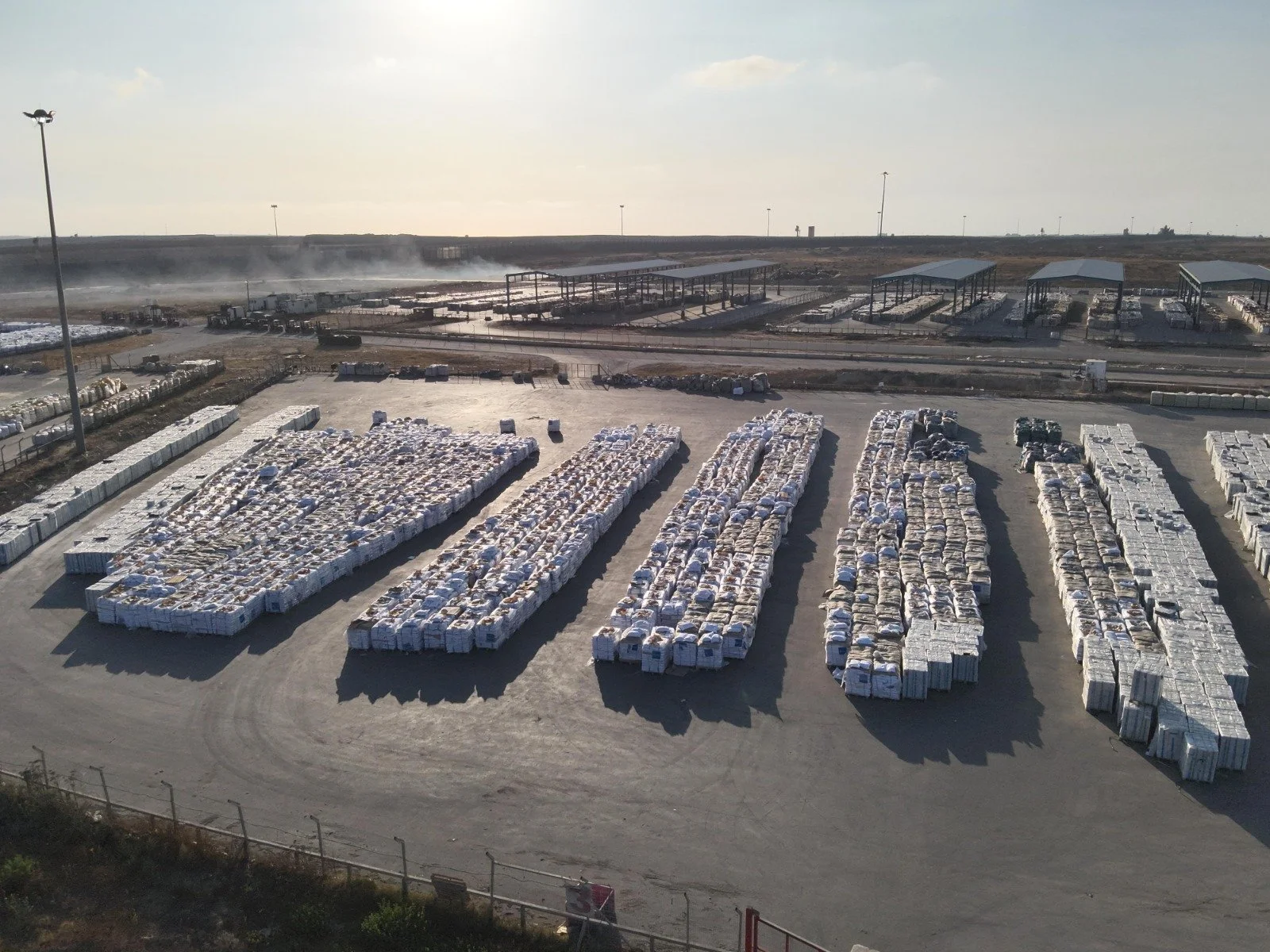Israel is “Weaponizing Starvation?” That’s Not What the Data Says
Over the past year, global opinion has turned sharply against Israel. Pew Research reports that a majority of US adults now view Israel unfavorably for the first time, while a Gallup poll finds approval of Israel’s Gaza campaign at a record-low 32%. A 24-nation survey released in June 2025 showed unfavorable views of Israel in 20 countries, often by two-to-one margins. On college campuses, sympathies have long since shifted: nearly 100 universities have hosted pro-Palestinian encampments or multiday protests, according to The Chronicle of Higher Education’s running tally. Among the most potent narratives driving the anti-Israel movement is the charge of “weaponised hunger” and the accusation that Israel “uses starvation as a weapon.”
This talking point is echoed across the discourse, from a UN panel of special rapporteurs, to press releases from groups like Oxfam and Amnesty International, to social media, to headlines in publications such as The Guardian and Foreign Affairs. But the claim collapses under data-backed scrutiny. From peer-reviewed calorie audits to battlefield logistics, Israel lets more food into Gaza than in any conflict on record for which such data exists. And yet food pallets pile up behind Hamas gunmen, UN pickups stall, and Egypt keeps Rafah shut, leaving a story that survives only by lies of omission and willfully ignoring where aid actually stops.
Source: Pew Research.
The “weaponised starvation” narrative proliferates because it photographs well: a hungry child, a desperate crowd, an Israeli gate, and a caption about siege warfare. Three talking points keep it afloat. First, Israel blocks food at the Gaza border. Second, that visible hunger in parts of Gaza proves intentional deprivation on the part of Israel. And third, that Israel’s IDF troops shoot civilians in aid lines to terrorise the enclave. Each claim dissolves upon contact with data. Inspection logs, calorie tallies, and incident reports point elsewhere — to Hamas rockets at crossings, UN bottlenecks, and Egypt’s southern lockdown. But a single villain spares every other actor — Hamas, the UN, and Cairo — from scrutiny. Remove the oversimplified framing of Israel as the root of all problems, and the story quickly changes from the evils of siege warfare to the issues of supply chains.
A peer-reviewed study covering January–July 2024 found that the average resident of Gaza was getting about 3,004 calories per day — well above the Sphere Project’s 2,100-calorie humanitarian emergency benchmark — peaking past 5,500 calories and dipping below the Sphere standard in four heavy-combat weeks. No other published wartime dataset shows higher sustained calorie numbers.
Israel’s Coordinator of Government Activities in the Territories (COGAT), the Defence Ministry liaison unit that logs every aid convoy, reported that about 4,500 trucks, including approximately 2,500 tons of pediatric and high-calorie food, entered Gaza between May 19 and July 19, 2025. During the same period, Reuters reported that around 950 loaded trucks sat uncollected just inside Gaza. On July 22, COGAT released drone footage showing nearly a thousand aid trucks stacked three-deep on the Gaza side of the Kerem Shalom Crossing — the main commercial gateway where Israel, Gaza, and Egypt meet. Independent geolocations place the trucks inside Gaza territory, not on the Israeli apron. This evidence underscores that the problem isn’t aid getting into Gaza, but rather that it’s not being picked up and distributed once it’s inside.
One problem is that drivers from the United Nations Relief and Works Agency for Palestine Refugees in the Near East (UNRWA) insist on “community-trusted” escorts to distribute these supplies. In Gaza, these “trusted” escorts are the blue-uniformed police — an arm of the Hamas-run government. Israel offers IDF protection; however, UN agencies often turn them down while maintaining that routes are unsafe and that local policing capacity has collapsed. Perhaps the larger problem is that UNRWA isn’t simply a politically neutral aid agency.
Food supplies sitting uncollected on the Gaza side of the Kerem Shalom Crossing, July 2025. Source: Times of Israel.
An Israeli intelligence dossier from January 2024 alleges that about 10% of UNRWA’s Gaza staff have ties to Hamas, a figure the agency disputes and is investigating. Whatever the exact percentage turns out to be, we know it’s not zero: internal UN probes have already led to multiple firings of employees linked to the October 7 attacks themselves. One of them, a math teacher named Ahmad Abu Dagga, filmed himself standing over Israeli hostage bodies and was later killed in combat. The incentive for Hamas is clear: every idle truck creates more desperation, generates more sympathetic news coverage, and extends Hamas’s leverage.
Hamas also fires on the same aid shipments it later blames Israel for withholding. Three separate salvos in May of 2024 struck Kerem Shalom, killing four IDF soldiers and forcing temporary shutdowns. On November 16, 2024, gunmen looted 98 of 109 UN trucks awaiting pickup. Residents later reported buying seized rations at inflated prices.
To better deliver food to the Gazan people, Israel and the United States launched the Gaza Humanitarian Foundation (GHF) in late May 2025. The design is Hamas-proof: commercial trucking firms deliver pre-packed rations to fixed depots, recipients confirm their identity on biometric tablets, and no militia has access to the manifest. The early results have shown promise. GHF warehouses now dispatch weekly food parcels and underwrite a World Central Kitchen field kitchen producing about 60,000 hot meals a day in the Gaza city of Deir al-Balah.
Critics counter that crowd surges and stampedes near GHF distributions have turned deadly, claiming that more than 700 civilians have been killed. Others point to reports of IDF forces firing on Palestinians seeking aid, reports the IDF disputes. The results show that the GHF model moves food at scale, though its casualty ledger remains contested. The fact is that aid convoys have a track record of being weaponised. In December 2007, the IDF seized 6.5 tonnes of potassium-nitrate explosives packed in EU-marked sugar sacks on a truck bound for Gaza. Israel argues that every unchecked pallet can become an anti-tank round aimed at the same soldiers who clear the convoys. It’s also worth pointing out that International law requires Israel only to permit passage; providing armed escorts exceeds that obligation.
The contrast between Israel and its enemies extends far beyond food logistics. The state of basic rights in Israel serves as an illuminating litmus test. For example, Israel is the only state in the region where LGBT soldiers serve openly and where foreign same-sex marriages are recognised in court. Tel Aviv’s 2024 Pride parade drew 25,000 participants. Meanwhile, Hamas enforces a penal code that punishes “unnatural intercourse” with up to 10 years in prison, and Gazan gay and bi youths who escape often seek asylum in Israel or Europe. This isn’t mere “pinkwashing.” A government that both escorts food to an enemy population and takes concrete steps to safeguard minority rights merits the presumption of humanitarian intent. Its adversary, which criminalises identity while commandeering aid, does not. And viewed through this lens, the entire conflict is cast in a different light.
Consider the crisis in Yemen. What crisis is that, you might ask? UNICEF warns that western coastal Yemen remains “on the verge of a catastrophe due to malnutrition” after years of war and conflict. Yet the global community is quiet, the scathing editorials are few, and the university protest encampments are nowhere to be found. Substitute Israel with any other belligerent and the outrage evaporates, proving that the driver is politics and a bias against Israel, not a pure concern for hunger.
Article 8(2)(b)(xxv) of the Rome Statute of the International Criminal Court criminalises using starvation as a method of warfare. And food is definitely being obstructed in Gaza; however, all indications point to Hamas as the perpetrator. Hamas fires rockets at entry points, hijacks aid, and embeds gunmen among civilians to ignite lethal incidents. UNRWA, by declining IDF escorts and failing to arrange effective alternatives, prolongs the blockage. UNRWA insists that its refusal is a matter of “operational neutrality.” Yet the result is an institutionally cautious UN agency sharing terrain with a terrorist militia that profits from every truck kept idle. Egypt, by locking down its side of Rafah, compounds the situation. Since Israel seized the Rafah crossing on May 7, 2024, Egypt has kept its side of the gate shut, citing IDF operations and security concerns. No aid trucks have entered from the south during the current phase. Yet protest banners rarely mention Cairo. And even with the disruptions, food deliveries are being made in record numbers — only to be labeled as a systematic policy of deliberate starvation.
Perception drives policy. Each time the starvation trope trends on social media, or is published in a major news outlet, or gets repeated by a person of influence, legislatures float ceasefire drafts to tie Israel’s hands while Hamas retools. The best way to counter this false narrative is with numbers. We can quote the calorie audit, point to the 950 stacked trucks on July 22, ask why Rafah stays closed, and press UNRWA on the pallets three layers deep behind its gate. We can demand that anyone repeating the charge identify a relief shipment that passed inspection but was denied entry. Humanitarian concern without a real respect for the facts only carries water for the culprits most at fault for the suffering in Gaza: Hamas. Replace slogans with ledgers and the libel dies.
Published Aug 05, 2025









